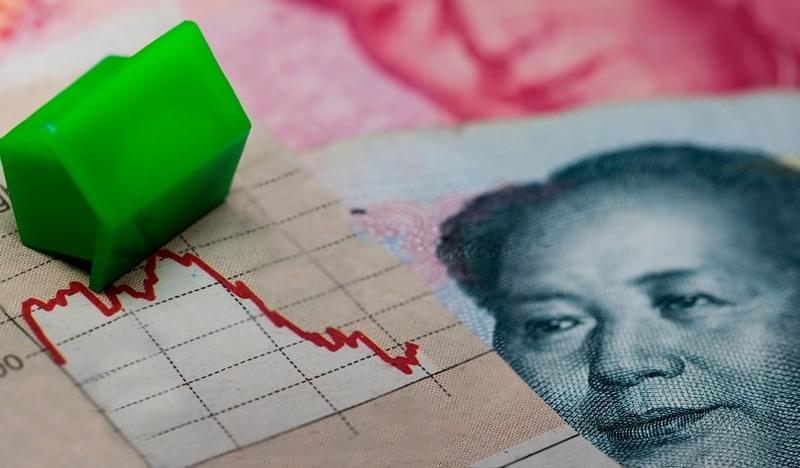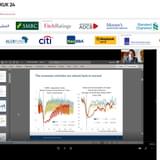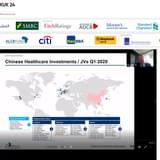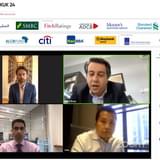For international investors clamouring for a piece of China’s onshore debt market, the third largest in the world, 2016 was a landmark year that saw the Chinese government ease or remove altogether a number of restrictions aimed at boosting capital inflows.
In February last year, the People’s Bank of China (PBOC) greatly expanded the scope of foreign institutions permitted to invest through a new filing approach, removing prior quota restrictions and allowing most types of foreign institutions including commercial banks, insurance companies, securities firms, fund management companies and other asset management institutions to invest in the interbank bond market without securing prior approval from the Central Bank.
Previously, foreign investors looking to access China’s onshore bond market were forced to use the qualified foreign institutional investor (QFII) and renminbi qualified foreign institutional investor (RQFII) programmes, which include quotas and a more complex approval process. Access was also highly restrictive, with just foreign central banks, sovereign wealth funds, supranational organizations, RMB clearing and settlement banks, and select insurance companies along with QFII/RQFII-registered investors allowed to participate.
Crucially, the government is also allowing investors to trade some FX derivatives for hedging purposes, the lack of which kept many investors on the sidelines.
The whole registration process was streamlined, too, with access granted to most investors within fewer than 20 days of appointing a settlement agent to handle onshore trades.
Where Did All the Foreign Investors Go?
Analysts and observers agree the results of the reforms have been encouraging, but the data on foreign holdings of Chinese bonds tells a different story – that foreign investors are actually tapering their holdings of onshore debt.
According to a recent Deutsche Bank report, foreign holdings of Chinese onshore paper have actually fallen from 1.6% of all outstanding debt in 2015 to 1.3% last year. This is despite the fact that onshore issuances actually surged 32% to CNY64tn (approx. US$9.3bn) in 2016, according to data from Wind Information, a Shanghai-based financial data provider. According to data from Moody’s, international portfolio investors pumped RMB779bn into China’s onshore bond market.
“From an operational perspective, one year on, you can definitely see that the whole process is much smoother – with the reforms providing a more efficient avenue for investors that would have had to queue up for months to gain meaningful access,” explained Jack Siu, an Asia Pacific investment strategist at Credit Suisse, which puts foreign holding of Chinese onshore bonds at closer to 4% of all outstanding issues.
Investors tend to like Chinese onshore bonds because they usually offer better yield than many developed and emerging market credits, with very low correlation to how other credits outside China trade, meaning they are a reliable source of diversification for portfolio managers.
But there are signs many are still waiting on the sidelines following a pretty significant market correction last year, prompted by a number of defaults which famously included that of China Railway Materials Company.
The company became the first state-owned enterprise to ask regulators to suspend trading of its debt instruments after it acknowledged it would struggle to repay investors. For many investors, it was the miner’s canary foretelling a potential debt sustainability issue from which state-owned enterprises – which implicitly enjoy the state-backing – are not immune.
All told, 22 corporates and state-owned enterprises registered defaults in 2016, up from just seven in 2015. There are also signs that overall credit quality is deteriorating, with 2016 registering over 500 credit rating downgrades, an 18% increase on the previous year.
“The impact of the shrinking bond market activities can be seen in the Total Social Financing (TSF) data. In the month of May 2016, TSF from corporate bond issuance was – RMB40bn, i.e., the negative cash flow from bond repayment is larger than the positive cash flow from bond issuance. This is the first time after July 2010 that a negative fund flow data has been recorded,” said Credit Suisse in a research note.
Offshore RMB issuance in 2016 was also fairly subdued last year despite record-setting issuance in emerging markets more broadly. About RMB130bn in Chinese offshore bonds were issued in 2016, down from RMB170bn the previous year, according to Moody’s.
Analysts and investors are also nervous about the extent to which the PBOC could tighten monetary policy through 2017. In the first months of this year the Central Bank shifted slightly from its previously accommodative stance to strike a more neutral tone, hiking the reverse repo rate by about 10bp and increasing the interest rate on its standing lending facility – used as a short-term liquidity window for financial institutions. It is likely to continue raising short-term interest rates throughout the year, but analysts are split on whether PBOC Governor Zhou Xiaochuan is likely to raise the benchmark interest rate anytime soon.
Xiaochuan has previously voiced concerns about non-financial corporate leverage in China being too high, though he has a preference for relying on other techniques – restructuring and reforming state-owned enterprises, using debt-to-equity swaps for struggling corporates, and forcing banks to implement stricter controls over what entities they lend to – to get the debt burden back down to sustainable levels, rather than pursuing a blanket tightening.
“It would be fair to say there are concerns around how the bond market will perform going forward. We have a fairly negative view on the bond market at the moment; we think the 10-year local currency government bonds are going to see yields rise to 3.5%, up from 2.4%, in the next three months, and in one year we could see yields spike as high as 3.8%. That steepening of the curve we think is going to continue because of uncertainty around monetary policy,” Siu said.
“The risk of tightening is likely to put investors on the backfoot, and make them a bit concerned. It could reduce the numbers of investors interested in getting involved in this market over the next 12 months,” he added.
Others have questioned whether declining foreign exchange revenues could undermine further credit support. China’s foreign exchange reserves recently slipped to US$3tn, down from a high of US$4tn two years ago. While the PBOC still holds far more in FX reserves than any other Central Bank, the retracement is a symbol for the country’s shifting fortunes, according to S&P Global Market Intelligence.
“Rising rates in China's money and bond markets suggest that liquidity conditions are getting tighter for banks. This trend could also lead to some mark-to-market losses for bond investment portfolios at banks and non-bank financial institutions. Such losses may trigger redemptions of fixed-income assets under management, leading to additional liquidity pressures for asset managers,” explained Qiang Liao, a director at S&P, at a recent roundtable with investors in Hong Kong.
Indices, Brand Recognition, and Working Out Kinks
Despite their concerns, international investors are likely to gain further exposure to China’s vast onshore bond market simply through their increasing inclusion in global fixed income indices. China currently remains underweight in most bond portfolios given the size of its market, with less than 2% of all outstanding yuan-denominated bonds represented.
But that will start to change. Earlier this year Citigroup became the first major index provider after Bloomberg Barclays to include onshore Chinese debt into its bond market benchmarks, a move delayed multiple times over investor concerns around repatriating money out of China. Citi Fixed Income Indices said in March it will include Chinese offshore debt in its Emerging Markets Government Bond Index, Asian government Bond Index, and Asia Pacific Government Bond Index, and gradually increase the weight of Chinese bonds over the next three months. JP Morgan, which also runs a number of popular fixed income indices, is still mulling whether or not to include Chinese onshore bonds in up to three of its benchmarks.
The move is more impactful than it may seem on first glance. According to Credit Suisse research, about 10% of foreign investors who hold onshore Chinese debt are passive index investors, compared with just 6% who are active investors. Research from Deutsche Bank suggests 1-2% of index weight in the JPM Global IG Aggregate Bond Index could result in total bond flow of US$40-60bn into China.
Citi’s announcement was made within weeks of the bank securing a highly coveted Type A license, becoming the first US lender to receive approval from the National Association of Financial Market Institutional Investors (NAFMII) and the PBOC to act as a bond settlement agent in the country's interbank bond market. It isn’t the only international bank doubling down on the onshore market. In February, JP Morgan, followed quickly by BNP Paribas, also secured approval from NAFMII to underwrite onshore corporate bonds issued by non-financial entities including commercial papers, medium-term notes and other instruments approved by regulators.
The presence of large US and European lenders could give international investors a massive boost in the market, but putting a dollar figure on the opportunity – or a timeline for its realisation – is tricky.
Samantha Xie, an executive director and Head of China Debt Capital Markets at JP Morgan, which largely focuses on large multi-national corporations looking for strong US dollar distribution, said that it will likely to take three to five years until JP Morgan, among other international lenders, can take a leading role on onshore bond transactions.
NAFMII uses a point-based system that rewards the most active co-managers and bookrunners with the opportunity to lead transactions, a framework that applies for international and domestic lenders alike. But foreign bank market share in China has actually decreased from 2% about three years ago to 1.6%, according Xie, which makes the prospect of these international lenders taking leading roles on transactions anytime soon slightly more remote.
On the investment side, there are still kinks that need to be worked out. For instance, China still lacks an actively traded swap market, a fairly crucial ingredient for international investors.
“There is simply no reference for currency swaps beyond the two-year mark, which makes it quite challenging for international investors to benchmark the yuan within their global portfolios,” Xie added.
But overall, Xie said, the market is moving in the right direction – albeit at a slower pace than many had anticipated.
“It’s hard to predict the scale of growth, it really depends on the economy and the policy decisions taken in the next three to five years. The government has eased restrictions on foreign investors participating in the onshore market, and allayed some of their concerns around fund repatriation – it has all of the key infrastructure in place. Going forward, it will be about whether economic returns make sense for investors.”









